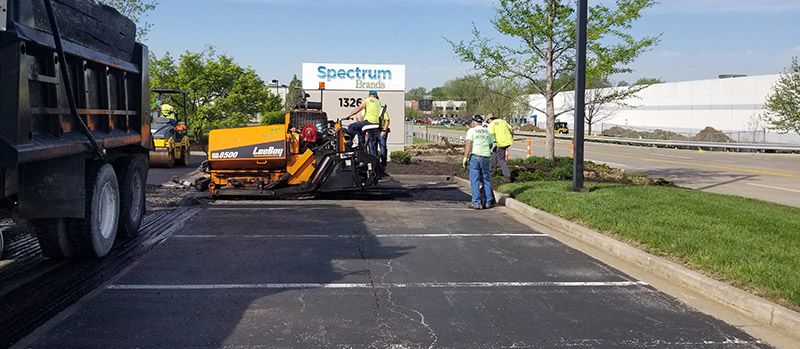Everything about A1 Professional Asphalt & Sealing Llc
Everything about A1 Professional Asphalt & Sealing Llc
Blog Article
Things about A1 Professional Asphalt & Sealing Llc
Table of ContentsThe Greatest Guide To A1 Professional Asphalt & Sealing LlcNot known Factual Statements About A1 Professional Asphalt & Sealing Llc Some Known Details About A1 Professional Asphalt & Sealing Llc The Greatest Guide To A1 Professional Asphalt & Sealing LlcSome Known Details About A1 Professional Asphalt & Sealing Llc

The oil in a car engine is not simply oil. It has a variety of additives to enhance the car's performance. These consist of polymers, viscosity modifiers, warmth stabilizers, extra lubricants, and put on ingredients. The REOB contains all the additives that were in the waste oil along with the wear steels from the engine (mostly iron and copper).
Nevertheless, by making numerous blends utilizing different REOB examples and various asphalt binders, the variations greatly can be averaged out. Several States provided examples of recognized REOB structure to TFHRC scientists, that examined the samples to contrast the percentage of added (known) REOB to the located (tested) amount. The analyses revealed a similar percentage of included and located REOB.
Unknown Facts About A1 Professional Asphalt & Sealing Llc
They obtained a frustrating reaction. The TFHRC scientists assessed 1,532 examples from 40 States, one Canadian province, and 2 Federal Lands Freeway departments. They analyzed each example twiceamounting to greater than 3,000 analyses. None of those States recognized that the asphalt they were buying had REOB. One State urged its samples had no REOB.
Of the 1,532 examples checked, 12 percent had REOB, and some had significantly high levels of it at 1020 percent. The highest degree was 34 percent in a sample from Texas, which TxDOT had utilized in a patching substance. This screening likewise revealed the existence of phosphoric acid in 11 percent of the examples, and 2 percent had ground tire rubber.
Two years ago at TRB's annual conference, the Federal researchers held an REOB workshop and provided the searchings for of their lab analyses to a standing room-only group. Some companies do not especially outlaw REOB, they do enforce physical examinations that prevent its useeffectively a restriction. Others do not ban it by requirements, yet have contracts with asphalt distributors to prevent using REOB
Some Ideas on A1 Professional Asphalt & Sealing Llc You Need To Know
A handful do permit REOB, some within specific restrictions. For instance, Ohio and Texas restriction degrees to much less than 5 percent of the asphalt. To create a reliable test method that all States can utilize, the TFHRC researchers set up a round-robin examination strategy. The participants are 11 State freeway firms (Illinois, Massachusetts, Minnesota, Mississippi, Montana, North Carolina, Oklahoma, South Carolina, Texas, Vermont, and Wyoming), 2 independent screening laboratories, the Ministry of Transport in Ontario, Queen's University in Ontario, and an Ontario paving contractor.
The individuals are testing the samples individually utilizing the guidelines offered by the TFHRC scientists. The outcome will be a proposed AASHTO examination approach that any State can embrace and utilize.
The pavement with REOB, which is located 0.6 mile (1 kilometer) from the sidewalk without REOB, has similar subgrade, website traffic density, and environment. The section of Highway655 with 5 to 10 percent REOB revealed considerable splitting. In this instance, the existence of REOB was the identified cause of breaking at a low temperatures.
A section of test pavement in Minnesota (MN1-4) found to have REOB also fractured prematurely. The pavement executed well for the very first 3 to 4 years, yet then started to fracture.
Not known Facts About A1 Professional Asphalt & Sealing Llc
The tests were not comprehensive, but they revealed that at degrees of 6 percent or more, the tensile stamina of the asphalt went down Go Here dramatically. At a degree of 3.5 percent REOB, the variation in the physical test techniques was more than the result of REOB. It was tough for researchers to evaluate whether REOB was existing. https://moz.com/community/q/user/a1asphaltseal.

One binder specification thought about is the distinction between the reduced temperature level important requirements temperature level for rigidity (S) in the bending light beam rheometer and the flexing light beam rheometer creep slope (m-value) noted as Tcritical. TC = TC (S) TC (m-value). Analysis of this parameter is still recurring. 2 independent study groups, one from AASHTO and the various other from the Asphalt Institute, ended that even more study is required on making use of REOB in asphalt.
Previously, all asphalt screening determined engineering properties such as stiffness. These examinations do not reveal what materials had been added to the asphalt. One sample received during the TFHRC research had an extremely odd evaluation. The example had the adhering to examination results: Superpave PG 64-28 with a heat grade of 67.3 Tcritical on the bending beam of light rheometer was 6.7 degrees Celsius.

Not known Factual Statements About A1 Professional Asphalt & Sealing Llc
These results show there are weaknesses in the standard engineering testing methods that might be manipulated. The manufacturer may have a financial benefit and the item passes all the standard examinations, yet the product might not be advantageous to making certain long-lasting efficiency. To resolve this problem and the expansion of new asphalt ingredients and extenders, TFHRC is beginning a research program to utilize handheld spectroscopic tools, x-ray fluorescence spectroscopy, and Fourier transform infrared spectroscopy to make it possible for evaluations to be performed in the field as opposed to needing to take examples back to the lab.
Report this page